This site was created specifically for people from Canada, for quick acquaintance with the gambling industry online. In today's article, you can know all about 6 Weird Lucky Charms From Around the Globe in Canada. Our Canadian visitors have asked us so many times to write the review of "6 surprisingly lucky animals around the world, 6 Weird Lucky Charms From Around the Globe in Canada" because of high interest in this topic. Well, the thorough investigation by our gambling expert had been already finished and we have collected here all useful information about 6 Weird Lucky Charms From Around the Globe in Canada in one review. You may read it now!
6 Weird Lucky Charms From Around the Globe in Canada
In ancient Egypt, the most important amulet was the scarab, usually modeled after the common Egyptian dung beetle, Scarabaeus sacer. They were even kept as pets as in the Charles Dickens’ story “The Cricket on the Hearth.”
6 surprisingly lucky animals around the world
Ireland is one of the few countries whose folklore lacks wildlife.
On Saint Patrick’s Day, the Irish celebrate lucky charms like a leprechaun or a pot of gold—but they’re not the only symbols of good fortune.
Many animals are considered auspicious in various cultures worldwide, from India to Egypt to the Americas.
In Cambodia, where fish are associated with “health, well-being, and good fortune,” a species called the try kantrop is particularly lucky, says Barry Kaufkins, a folklorist at Western Kentucky University. (Also read about animal superstitions around the world.)
In fact, this species inspired a product for treating anemia in people with iron deficiencies.
When Canadian physician Christopher Charles was in Cambodia researching the health problem about a decade ago, he observed how important fish—and try kantrop—are in the country.
That gave him the idea of placing fish-shaped iron ingots into cooking pots; the boiling water releases iron into the food, without any impact on taste.
Now a product called Lucky Iron Fish, these small, reusable objects can treat short-term iron deficiency in some people.
Crickets
Across Asia and Europe, crickets are a symbol of good luck, says Jeanne Ewert, a specialist in folklore studies at the George F. Smathers Libraries at the University of Florida.
They were even kept as pets as in the Charles Dickens’ story “The Cricket on the Hearth.”
See Vintage Photos of Insects and Spiders
“It was considered very bad luck to kill a cricket because they sing and harm no one,” Ewert says.
Beetles
In ancient Egypt, the most important amulet was the scarab, usually modeled after the common Egyptian dung beetle, Scarabaeus sacer.
This insect was “symbolically as sacred to the Egyptians as the cross is to Christians,” according to the McClung Museum at the University of Tennessee.
Images of scarabs were believed to bring good fortune, in this world and the next, if sewn in to the wrappings of your mummy. (Read how dung beetles can navigate via the Milky Way.)
In many cultures, the iconic ladybug, with its spotted red wings, is thought to bring good luck. In the United States, it’s a fortuitous sign if a ladybug lands on you.
That’s because the beetle is “dedicated to the Virgin Mary,” a central figure in the Christian religion, says Dan Melia, a professor of Celtic Studies at the University of California, Berkeley. In other words, “it’s ‘our lady’s bug,’” he says.
Ladybugs have associations with the divine in many languages. In Sanskrit, the beetle’s name means “Indra’s shepherd”; Indra is a Hindu god.
Cranes
In Asia, particularly China and Japan, people view red-crowned cranes as fortunate because they’re linked to longevity, and are thought to live a thousand years, Ewert says. (In reality, a red-crowned crane lives about 30 years in the wild.)
6 surprisingly lucky animals around the world
Ireland is one of the few countries whose folklore lacks wildlife.

On Saint Patrick’s Day, the Irish celebrate lucky charms like a leprechaun or a pot of gold—but they’re not the only symbols of good fortune.
Many animals are considered auspicious in various cultures worldwide, from India to Egypt to the Americas.
In Cambodia, where fish are associated with “health, well-being, and good fortune,” a species called the try kantrop is particularly lucky, says Barry Kaufkins, a folklorist at Western Kentucky University. (Also read about animal superstitions around the world.)
In fact, this species inspired a product for treating anemia in people with iron deficiencies.
When Canadian physician Christopher Charles was in Cambodia researching the health problem about a decade ago, he observed how important fish—and try kantrop—are in the country.
That gave him the idea of placing fish-shaped iron ingots into cooking pots; the boiling water releases iron into the food, without any impact on taste.
Now a product called Lucky Iron Fish, these small, reusable objects can treat short-term iron deficiency in some people.
Crickets
Across Asia and Europe, crickets are a symbol of good luck, says Jeanne Ewert, a specialist in folklore studies at the George F. Smathers Libraries at the University of Florida.
They were even kept as pets as in the Charles Dickens’ story “The Cricket on the Hearth.”
“It was considered very bad luck to kill a cricket because they sing and harm no one,” Ewert says.
Beetles
In ancient Egypt, the most important amulet was the scarab, usually modeled after the common Egyptian dung beetle, Scarabaeus sacer.
This insect was “symbolically as sacred to the Egyptians as the cross is to Christians,” according to the McClung Museum at the University of Tennessee.
Images of scarabs were believed to bring good fortune, in this world and the next, if sewn in to the wrappings of your mummy. (Read how dung beetles can navigate via the Milky Way.)
In many cultures, the iconic ladybug, with its spotted red wings, is thought to bring good luck. In the United States, it’s a fortuitous sign if a ladybug lands on you.
That’s because the beetle is “dedicated to the Virgin Mary,” a central figure in the Christian religion, says Dan Melia, a professor of Celtic Studies at the University of California, Berkeley. In other words, “it’s вЂ˜our lady’s bug,’” he says.
Ladybugs have associations with the divine in many languages. In Sanskrit, the beetle’s name means “Indra’s shepherd”; Indra is a Hindu god.
Cranes
In Asia, particularly China and Japan, people view red-crowned cranes as fortunate because they’re linked to longevity, and are thought to live a thousand years, Ewert says. (In reality, a red-crowned crane lives about 30 years in the wild.)
Cranes in general are “nearly universally lucky” around the world, she adds. This may be because these tall, elegant birds pair bond and stay together for years or until one of them dies.
Elephants
Elephants are lucky in China, Ewert says, and also in India, where they’re connected to the elephant-headed Hindu deity Ganesh.
In the Hindu religion, Ganesh is the remover of obstacles, especially at the start of an endeavor.
In Buddhism, a gray elephant symbolizes the untrained mind—agitated and potentially destructive. After practicing the religion, the mind becomes controlled, strong, and serene—and is then represented by a white elephant.
Luck of the Irish
It “is culturally notable” that animals aren’t anthropomorphized in folktales or considered lucky in Ireland, Melia says, especially since it’s so common elsewhere. (See 17 pictures that transport you to Ireland.)
Is it four-leafed? We’ll take it!
Have a question about the weird and wild world? Tweet me or find me on Facebook.
Eight Unusual Good Luck Charms
“Luck,” the playwright Tennessee Williams once wrote, “is believing you’re lucky.” That may be true, but people around the world have always tried to boost their good fortunes with talismans, symbols and trinkets—including a few that may seem bizarre today.
From phallic charms to chimney sweeps, discover eight of the most unusual good luck charms from history.
1. Tintinnabulum

A 7th-6th century BC tintinnabulum at the Archaeological Museum in Bologna, Italy. (Credit: DeAgostini/Getty Images)
ORIGIN: Ancient Rome
The ancient Romans were staunch believers in the powers of amulets, pendants and other good luck charms, but few talismans are as unusual as the tintinnabulum. Ostensibly a wind chime, the tintinnabulum typically featured a collection of bells surrounding a bronze carving of a winged phallus. When hung from a doorway or window and rustled by the breeze, the tintinnabulum would create a jingling sound that was believed to ward off bad spirits and bring good fortune to the household. The tintinnabulum wasn’t the only Roman trinket to feature a winged phallus, or “fascinus.” The design was a recurring motif in Roman art, thought to offer protection against the “evil eye.” According to the ancient writer Marcus Terentius Varro, Roman boys were even known to wear fascinus amulets around their necks to prevent harm from coming to them.
2. Chimney Sweeps

Newlyweds keeping alive a centuries-old tradition of having a chimney sweep wait outside a church and shake hands with wishes of good luck. (Credit: Ernie Leyba/The Denver Post via Getty Images)
ORIGIN: 18th Century
In the British Isles and other parts of Europe, there is a long-held belief that chimney sweeps are bringers of good luck. Though the origins of the superstition are somewhat murky, one version tells of an intrepid sweep rescuing King George III from a runaway horse, while another holds that a soot-covered laborer once slipped off a roof and ended up dangling from a ledge, only to be saved by a woman who later became his wife. According to legend, shaking a chimney sweep’s hand or passing one on the street is a harbinger of good fortune. The tradition is most famously associated with weddings, as it’s believed to be particularly auspicious for couples to encounter chimney sweeps immediately after leaving the church. Even today, some couples hire a chimney sweep—complete with brush, top hat and a soot-smeared face—to give the bride a lucky kiss.
3. Hangman’s Ropes

(Credit: Education Images/UIG via Getty Images)
ORIGIN: Medieval Era
During the days of public executions in Europe and the United States, it was not uncommon for spectators to hunt down artifacts associated with the condemned. One of the most sought-after of these morbid souvenirs was the hangman’s noose, which was widely believed to hold special powers. “This ill-omened cord seems to have possessed a great reputation in different times and countries for rare occult and beneficent qualities,” a British magazine noted in 1882. Sick people would wrap the ropes around their heads as a cure for headaches and fevers, but the talisman was most popular among gamblers and cardsharps, many of whom believed that owning a piece of a noose would keep them in good standing with Lady Luck. The ropes were so valuable that hangmen were even known to cut them into pieces for sale as good luck charms.
4. Birth Cauls

(Credit: Tetra Images/Getty Images)
ORIGIN: Ancient Rome
A caul—the name comes from the Latin for “helmeted head”—refers to a piece of amniotic membrane that sometimes covers the face of newborn babies. The condition is relatively harmless, but its extreme rarity led to a number of age-old superstitions. In ancient Rome, it was widely believed that a caul was a lucky omen, and possession of a one would bring its owner good fortune. The Emperor Diadumenianus, for example, got his name from being born with a caul that resembled a “diadem,” or crown. In subsequent eras, cauls were variously thought to confer eloquence, good health and financial success, and they were so prized that midwives were known to steal them from newborn babies. The belief that cauls were lucky totems prevailed in Europe as recently as the 19th century, when preserved membranes were advertised for sale in newspapers. They were particularly sought after by sailors and ship captains, many of whom believed that owning a caul would protect them against drowning.
5. Fumsups

Fumsup charm. (Image courtesy of LiveAuctioneers.com Archive and Fellows)
ORIGIN: Late 19th century
First arising as a fad in the late 19th century in Britain, Australia and the United States, “Fumsups” were tiny charms featuring a cherub-faced doll giving the lucky thumbs-up gesture with both hands. The trinkets had bodies made of metal, and a wooden head that allowed their owner to “touch wood” or “knock on wood” for good fortune. “Behold in me, the birth of luck,” read a poem that accompanied one advertisement, “two charms combined—touchwood-fumsup.” Fumsups were at their most popular during World War I, when they were often given to soldiers to serve as lucky talismans on the battlefront. Some versions also featured a four-leaf clover painted on the doll’s head to give their owners an extra dose of good fortune.
6. Swastikas

In Pictures Ltd./Corbis/Getty Images
ORIGIN: Prehistoric
The ancient swastika, which translates roughly to “wellbeing” in Sanskrit, has long been a sacred sign in Eastern religions such as Hinduism and Buddhism. Starting in the 19th century, new archaeological discoveries saw the bent cross emerge as a good luck symbol in the West, and by the early 20th century, it appeared on everything from Coca-Cola advertisements to Boy Scout merit badges, food packaging, airplanes and jewelry—even the uniforms of Canadian hockey teams. The swastika’s meaning began to shift in the 1920s and 1930s, when Adolf Hitler’s Nazi Party appropriated it as a symbol of their belief in an ancient Aryan race. The association transformed the swastika into a hated emblem of fascism following World War II—it was even banned outright in postwar Germany—but it continues to function as a religious symbol to many around the globe.
7. Hunchbacks

A 17th century painting of a hunchback. (Credit: Sergio Anelli/Electa/Mondadori Portfolio via Getty Images)
ORIGIN: Ancient Greece
Belief in the lucky hunchback dates back to the ancient world, where people with spinal curvature or other physical ailments were often cruelly viewed as being comical. Both the Greeks and Romans depicted hunchbacked figures in their art and sculpture, and it was widely thought that rubbing an afflicted person’s hump would bring good fortune. According to historian Barbara Hughes Fowler, author of The Hellenistic Aesthetic, hunchbacks may have also been thought to divert the “evil eye” curse “because of their sheer ugliness, or because they provoke laughter, which would in itself dispel the dark powers, or because they somehow anticipated the worst that the eye could do.” The superstition is most closely associated with the Mediterranean—a hunchback charm known as a “Gobbo” can still be found in Italy today—but it also existed in the United States, where, in the early 20th century, professional baseball clubs often enlisted hunchbacks as lucky team mascots.
8. Bezoars

Bezoars are small stones which form in the stomachs or intestines of certain animals, this one from a goat, which were used as a remedy against many diseases. (Credit: SSPL/Getty Images)
10 Weirdest Lucky Charms Around The World
If you’ve been wondering how to boost your gambling luck, look no further. Check out the weirdest lucky charms we found from around the world and how they earned their esteemed place in the hearts and hands of superstitious folk.
1. Ladders

Image Credit: mummies2pyramids.info
We all know not to walk under them but did you know that in Ancient Egypt they were placed in the tombs of the dead to help souls find their way up to heaven? Led Zeppelin was definitely on to something! Because of this, and the triangular shape they create when propped against walls, ladders are actually considered a symbol of good luck. And the best thing? You probably have one in your garden shed.
2. Cat’s Eye
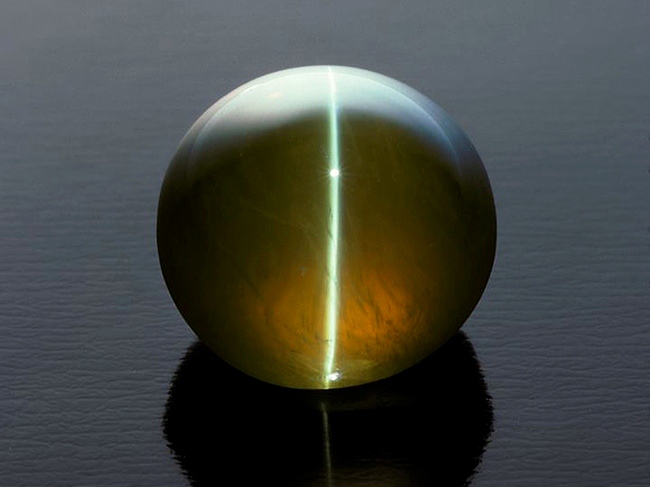
Image Credit: sampathgems.com
You don’t need to threaten one of the feline’s nine lives, no, we’re talking about the cat’s eye stone. The belief in India is that with one of these in your pocket you’ll have ever-lasting fortune. Easy to see why it’s often the good-luck charm of choice in the gambling world since it guards the carrier’s wealth from unforeseen business losses and promotes financial stability.
3. Tumi
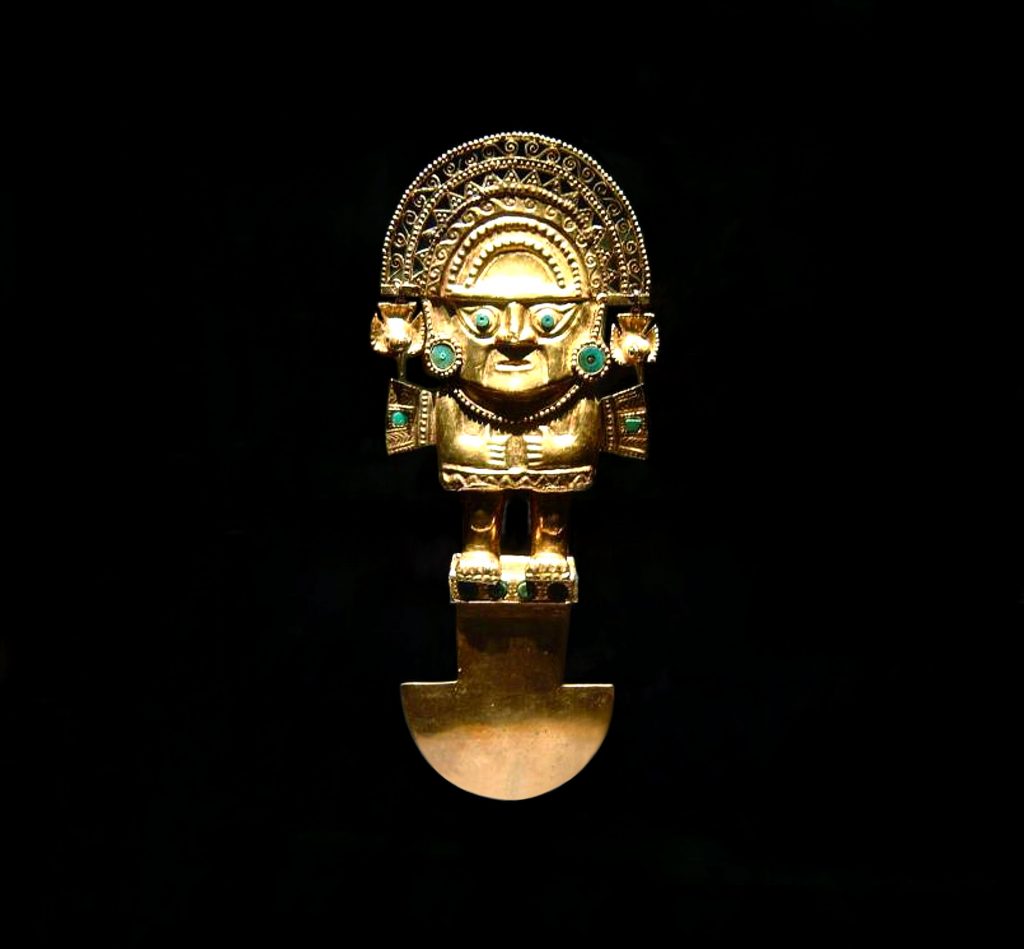
Image Credit: i.ytimg.com
The national symbol of Peru, a tumi is an ornate, sacrificial ceremonial axe that brings good luck. Before you get any ideas about raiding your toolbox you should know it’s not just any old axe. It’s distinctively characterized by a semi-circular blade and hangs on the wall or door to bring good fortune.
Its beauty hides its gruesome history where the Incans and earlier cultures used it in religious ceremonies. Celebrating the sun god meant one unlucky llama would have its heart cut out so that its entrails could be used to pave the way for a divine future. What a way to go.
4. Three-legged Toad
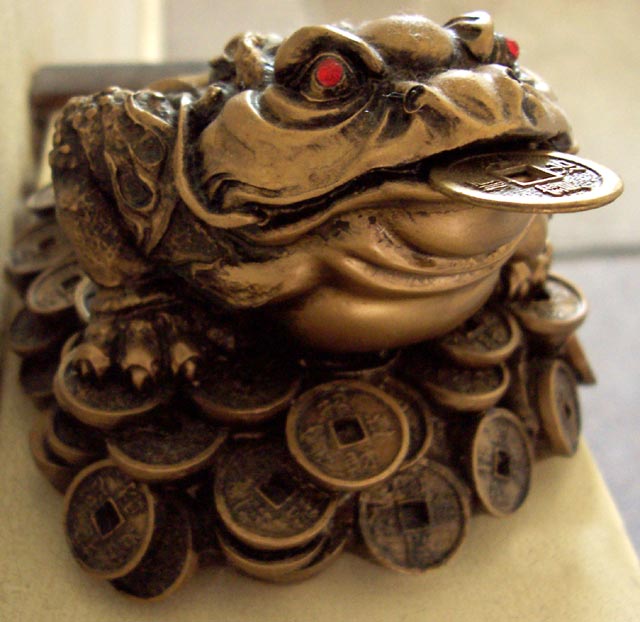
Image Credit: wikimedia.org
This good-luck charm ain’t pretty but in China the three-legged, red-eyed toad is considered a good fortune and prosperity magnet. Called the Jin Chan, this rather ugly-looking ornament is kept in homes and businesses to keep bad luck at bay and bring in the money. Beauty really is within the eye of the beholder after all and if this little critter gets you on a winning spree, who cares if it’s a bit aesthetically challenged?
5. The Fascinus
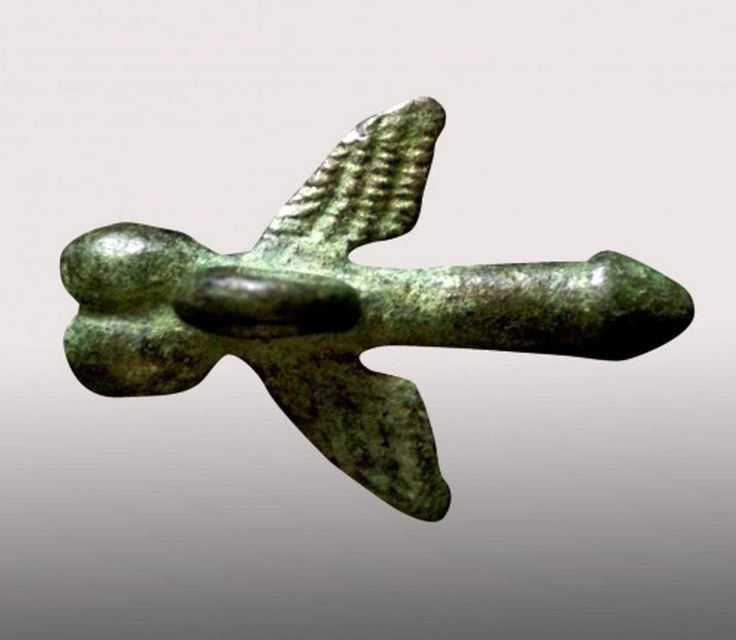
Image Credit: pinterest.com
The Ancient Romans did a lot for society using sheer man-power so it’s no surprise that their lucky charm takes the form of a fascinus. Thought to protect from the Evil Eye this Roman amulet or sculpture is shaped like a divine phallus. To you and me, it’s quite simply a lucky penis.
6. Carp Scale

Image Credit: wikimedia.org
For all you fishing fanatics out there this one’s for you. In Poland it’s traditional to eat carp on Christmas Eve and the saying goes that if you keep the fish scales in your wallet it will bring prosperity and good fortune for the following year. Seems easy enough to cart around but we’re not so sure about the smell.
7. Rabbit’s Foot
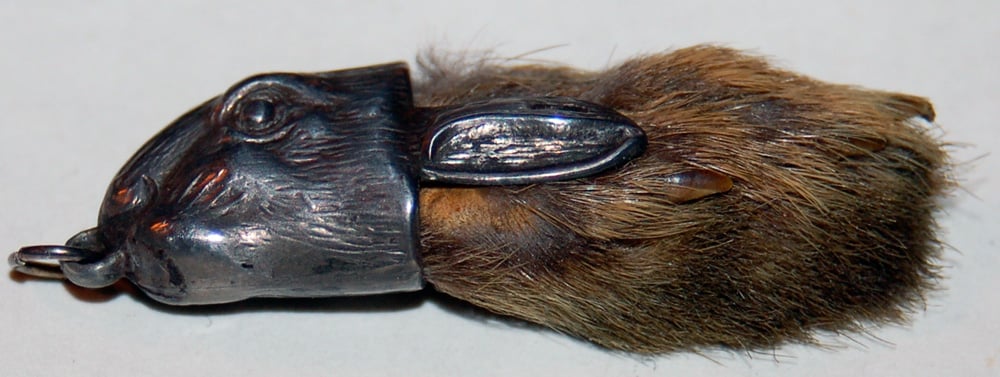
Image Credit: wikimedia.org
Dating back to 600BC Europeans have been carrying around a rabbit’s foot for good luck. It’s popular across the Americas, China, and Africa too. Run, rabbits, run, it’s worldwide! Again, it’s all very specific. It has to be the left hind foot, as the left is supposedly the ‘evil’ side, so be sure to check which foot you’ve got hold of before you take one to the roulette wheel.
8. Alligator’s Teeth
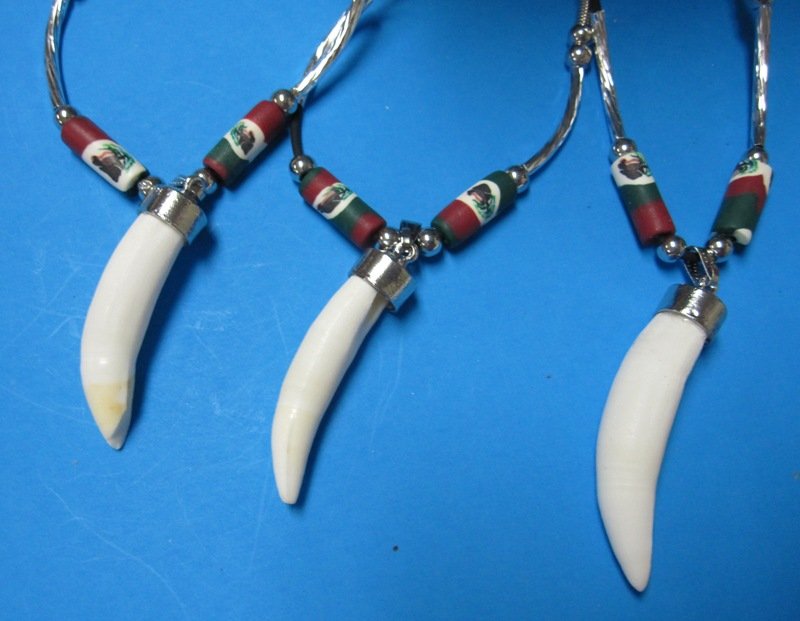
Image Credit: atlanticcoralenterprise.com
Not just a questionable fashion choice, wearing one of these around your neck is actually considered pretty lucky and may be a better money-spinner than your milk teeth after a visit from the tooth fairy.
In Africa, some cultures use them to bring wealth and good fortune when gambling. If you’re into your casino movies, you might have noticed sometimes gamblers are seen wearing a few teeth around their neck. Now we know what that’s all about.
9. Scarab Beetles
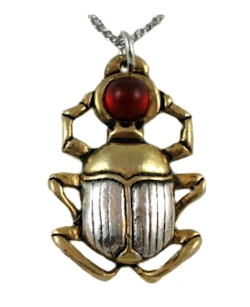
Image Credit: themagickalcat.com
In Ancient Egypt, amulets shaped like scarab beetles kept its carrier protected from all sorts of evil. These insects are associated with the rising sun and sun god, Ra. Just like Ra, who maintains the rolling of the sun across the sky each day, the scarabs keep their larvae well-nourished by rolling dung across the grass. They represent rebirth and transformation, so reinvent yourself and your lucky streaks with one of these good-luck charms.
10. Vulture Heads

Image Credit: designeranimals2011.wikispaces.com
Not a bird you usually want flying around you given their scavenger status. But their keen eye has led people to believe that they can see into the future. Definitely a power you want to possess at the casino, right? South African lottery players definitely think so and a well-preserved vulture head can set you back as much as $1,000. The poor vulture population is taking a hit for the expensive trend.
Whilst these charms might not actually affect the outcome of your game, they’ll certainly boost your confidence. It’s all about your state of mind after all, and if you’re feeling unbeatable, you’ll make better decisions. So, what are you waiting for? Grab your charm of choice and hit the slots. It’s your lucky day!
6 of the world's weirdest taxes
Flavored vodka and toy-less cereal are just a couple of items singled out for special levies
By Katrine Dermody
May 14, 2013 10:11PM (UTC)

Shares
This article originally appeared on GlobalPost.
As the old adage goes, there are only two certainties in life: death and taxes.
We at GlobalPost live by a third certainty: The world is a weird and wondrous place. However, we didn't realize until recently how much the promises of weirdness and taxes overlap.
From extra charges on flavored vodka in the US to beards in Russia, here are the top six wackiest taxes we've found around the world:
1. Tax on smartphones and laptops in France
French President Francois Hollande is considering a tax on smartphones, laptops and tablets to finance the country's celebrated exception culturelle, or "cultural exception," a precious French principle enshrined in law.
The exception essentially requires that anything considered to be of cultural value to French society must be protected from erratic market forces and the pernicious spread of non-French cultural items — namely, American and other English-language influences.
2. Tax on flavored vodka in the United States
Americans, President Barack Obama wants to put a levy on your Stoli Raz.
According to ABC News, distilled spirits currently get a (somewhat arbitrary?) tax break if they include flavors. But if Obama's budget proposal goes through, it will mark the end of the gravy train for fruity libations.
In the US, distilled spirits are taxed at $13.50 per "proof-gallon," the equivalent of a gallon of 100-proof liquor. But if distillers add flavorings, they can roll back some of that tax: specifically, up to 2.5 percent of the alcohol in those flavoring mixtures is exempt from the spirits tax.
While this rollback may not sound like much, the US Treasury says the existing tax break gives an unfair advantage to flavored liquors, particularly foreign products whose flavor quotients aren't as restricted as in the US.
This tax would be great for Jack Daniels — but not awesome for lovers of Absolut Ruby Red.
3. Tax on beards in Russia
This is an oldie but a goodie, in our books at least.
The Russian beard tax is a relic from the age of Peter the Great. In the late 1600s, clean-cut Pete set out to modernize Russia by getting everyone to shave their facial hair — we hope that there was a Movember exception?
Anyone who wanted to keep a beard was taxed by having to buy a token, which bore the phrase, "The beard is a superfluous burden."
Thankfully, this tax is no longer written law, but it merits a mention for its enduring absurdity — especially from a nation that has a climate comparable to the inside of a Good Humor truck.
4. Tax on cow flatulence in the EU
Environmentalists are trying to save the planet, one gassy cow at a time.
A key producer of methane, cow flatulence is a leading cause of global warming —accounting for approximately 18 percent of the world's greenhouse gasses. Cows' slow digestion, combined with their gas-producing diet of greens, causes excessive methane build-up around the globe. The issue is compounded by slaughterhouses, which store thousands of cows in one location, creating large clouds of methane.
As a result, Ireland, Denmark and other EU nations have started taxing cattle "byproducts" at varying rates. In Ireland, the tax is set to be $18 per cow, while Danish farmers will have to pay at a rate $110 per head.
5. Tax on beer in Israel
Israeli Prime Minister Benjamin Netanyahu swore, under the shadow of significant belt-tightening in April, to double the country's tax on beer, from about 60 cents to $1.20 a bottle.
Pre-tax, the average price of beer in Israel was already pretty steep — ranging from a bar price of about $5 for a 12-ounce bottle of the most common local lagers, Goldstar and Maccabee, to about $8 for a fine microbrew or imported specialty.
The new tax proposal has, unsurprisingly, been panned by barkeeps and beer drinkers alike.
6. Tax on toy-less cereal in Canada
This one gets an honorable mention, though technically it is a tax exemption rather than a straight-up tax.
Yes, apparently in Canada, makers of children’s breakfast cereal are granted tax-exempt status if their cereals contain free toys.
Sounds cool, right? Here's the kicker — this exemption is limited to toys that are not “beer, liquor, or wine.” So don't expect a nip of Crown Royal in your Lucky Charms.
Normal, un-fun cereal, as well as the hypothetical cereal packed with alcoholic "toys"(Cap'n Krunk?), get taxed normally in Canada.
Katrine Dermody
MORE FROM Katrine Dermody
55 of the Strangest Superstitions From Around the World
Wait 'til you hear what some women believed about acorns.
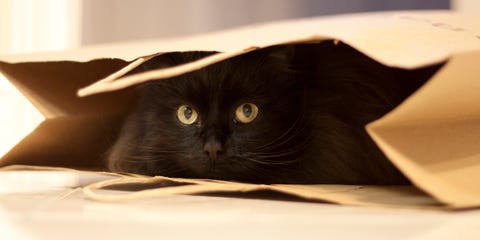
Superstition follows us everywhere. We unapologetically cross our fingers (and toes and … well … whatever else we can) when we're in need of a little extra luck. While some of these rituals might sound a little odd, you won't catch us making any big commitments on Friday the 13th.

Celebrating or even congratulating someone on a birthday before the day arrives brings bad luck, at least in Russia that is.

The infinite reflections may look cool, but in Mexico and elsewhere facing mirrors open a doorway for the devil.

Poking chopsticks down into your food is a big no-no in Japan. The utensils look like the unlucky number four, which means death, and also the incense sticks used at funerals. Another tip: Don't point your chopsticks at anyone. That's just plain rude.

Gifting anything with a blade can supposedly sever a relationship, so if you receive a knife set or a pair of scissors as a present, give the person a coin in return.
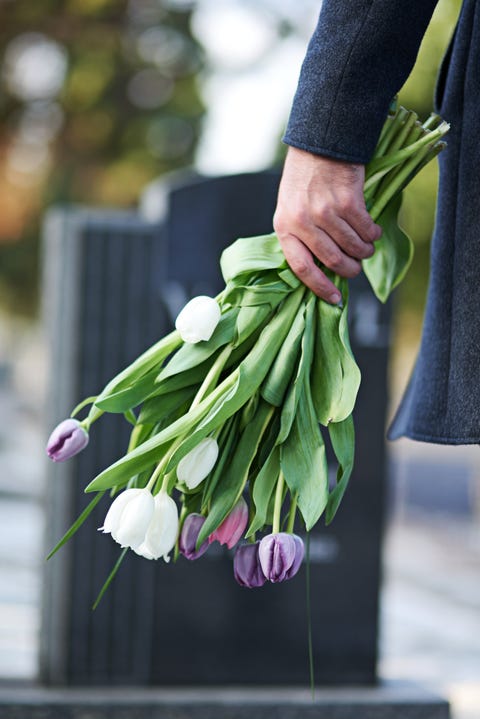
A Filipino tradition called "pagpag" dictates that people never go straight back to the house after a wake. Otherwise a bad spirit might tag along and come inside. Mourners will make a stop at a restaurant or store first just in case.

Whistling while you work may be an issue in Lithuania where it's forbidden to whistle indoors because the noise is believed to summon demons.

A German superstition declares that if you cheers with water you're actually wishing death upon the people you're drinking with. The idea stems from Greek mythology.

According to Japanese superstition, sleeping with your head in this direction is bad luck because that's how the deceased are laid to rest.

Conversely, the same superstition exists in Africa if you sleep with your head to the west.

In Britain, it's considered bad luck because it is supposed to symbolize the death of a loved one. Back in the day, placing someone's shoes on a table was a way to let their family know that they passed away. Nowadays, it's also just bad etiquette.

In Turkey, an itchy right hand means you'll come into some money but an itch on your left means you'll lose money.

Crafters beware! Idly playing with scissors will bring bad luck according to Egyptian lure. Plus, it's just plain dangerous.

This one seems unlucky all around but just go with it. Stepping in dog poop is actually considered good luck in France if you do it with your left foot. It's only bad luck if you step with your right foot.

According to a Russian superstition, bird poop that lands on you or something that belongs to you will bring you wealth — something to keep in mind the next time you're reading under a tree.
Friday the 13th: How it came to be and why it's considered unlucky

Why are we like this? Whether you are superstitious or not, you can't escape the chatter circling the spookiest calendar date. (Jonathan Binder/CNN)
Share:
At least once a year, the calendar dates align to give us a Friday the 13th. Airline ticket prices tend to dip (when we're not in a pandemic), your superstitious boss avoids important meetings and the whole day, there's a small part of you that's just waiting for something weird to happen.
Why are we like this? Whether you are superstitious or not, you can't escape the chatter circling the spookiest calendar date.
WHY 13?
The fear of 13 dates back centuries and many believe it originates from the Code of Hammurabi which reportedly left out a 13th law from its written legal codes. However, in reality, this was actually just an error made by one of the translators who simply omitted a line of text.
Such superstitions have persisted even among history's greatest minds. The great Austrian-American composer Arnold Schoenberg had such a severe case of triskaidekaphobia (the fear of the number 13), he omitted numbering the 13th measure in some of his later works, substituting it with the notation "12a." He was also reportedly deeply afraid of dying on a year or at an age that was a multiple of 13. When he turned 76, a colleague suggested it would be an unlucky year because 7+6=13. Indeed, Schoenberg did pass away that year, on. wait for it. Friday the 13th of July, 1951.
It is interesting to note the contrasting history of the number 12 with the number 13. We have 12 months a year, 12 zodiac signs, 12 hours a day and even 12 days of Christmas -- the prominence stemming from the historical influence of the New Testament of the Bible and other Judeo-Christian traditions. Even Schoenberg, the number 13's greatest enemy, was best known for developing a 12-tone system of musical composition.
WHY FRIDAY?
The negative association with Friday specifically has a combination of religious and cultural origins. Some Christians believe Friday to be unlucky because it was the day of the week that Jesus was crucified. In the 14th and 15th centuries, prominent figures and writers started to publicly denounce the day with little context as to why. Geoffrey Chaucer's "Canterbury Tales" depicts Friday to be "a day of misfortune" and playwright Robert Greene defined "Friday-face" as "a sad look of dismay or anguish."
WHY FRIDAY THE 13TH?
Unsurprisingly, we are not exactly sure of the historical evidence as to how Friday the 13th became synonymous with bad luck and superstition. There are many theories that date back to earlier centuries, but most of them have been completely debunked.
The real Friday the 13th hysteria started in the 20th century. Many date this back to Thomas Lawson's book "Friday, the Thirteenth" which is about a stockbroker who chooses this day to deliberately crash the stock market. One year later in 1908, The New York Times became one of the first media outlets to acknowledge the superstitions of Friday the 13th. Later in the 1980s, the popularity of the "Friday the 13th" movie franchise added to the cultural phenomenon.
THE SCIENCE BEHIND SUPERSTITION
1 in 4 Americans say they are superstitious. While the other 3 out of 4 Americans might scoff at this, there is actually psychological science to back superstition. Psychologists at Kansas State University say superstitions are all about trying to control your fate. People often use superstitions to try to achieve a desired outcome or to help alleviate anxiety. A perfect example of this is performers and athletes who perform specific and sometimes quirky rituals before a big event.
Mathematician and author Joesph Mazur explains how having superstitions can actually promote a healthy and positive mentality. "Everyone wants luck but since there is no tangible thing we can call luck, we have to create that tangible thing by transferring it to an object. People hold on to those objects as a sense of security."
One 2010 study conducted by psychologist Stuart Vyse tested a group of people on various memory tasks. The group of people who were allowed to carry their lucky charms with them performed better on the memory tests than the people who had their lucky charms taken away. "It's all about that 'low cost' confidence booster," Vyse concluded.
By that logic, Friday the 13th could be just as lucky as it is unlucky, depending on your outlook. So, instead of being scared of this eerie date, try incorporating some positive rituals in your life and see what happens!
Divisions: Kids
Cruisin’ Across Canada With YTV’s Weird on Wheels
YTV, Hasbro, Minute Maid and Lucky Charms Bring Weird on Wheels to Canadian KidsThis summer YTV’s travelling road show, Weird On Wheels (WOW), visits Canadian cities from coast to coast. From June 1 to September 2, 2002, the WOW tour featuring Oooze (the truck) and the Crooo (the hosts) will visit family events throughout the … Continued
YTV Programming Update June 2004
YTV PREMIERES ROMEO Life isn’t always easy, especially when you have a rapping, record producing dad, a nutty nanny, two brothers and a sister to deal with. Romeo just wants to play basketball and rap, but trouble keeps getting in his way. And it doesn’t help that he has a popular, perfect older sister Jodi, … Continued
YTV Programming Highlights July 2004
MY BRAND NEW LIFE PREMIERES ON YTV Who wouldn’t want to see if the grass is greener on the other side or even if there’s any grass at all? This 13-part series invites kids from different backgrounds to escape into a “brand new life.” The characters trade lives, or take on a new one, exploring … Continued
YTV Programming Update May 2004
JUSTICE LEAGUE COMES TO AN END On Monday, May 17, Justice League will come to an end when YTV airs the final three episodes in a special 90-minute programming event. In Starcrossed, premiering at 6 p.m., when a Thanagarian force arrives and occupies Earth, Hawkgirl is torn between loyalty to her homeland and love of … Continued
YTV Programming Highlights June 2004
A SALUTE TO THAT LAZY, LASAGNA-LOVING CAT – GARFIELD! To celebrate his first feature film coming to theatres June 11, YTV salutes the one and only Garfield by airing four prime time specials from Monday, June 7 to Thursday, June 10. HERE COMES GARFIELD (1982) Garfield and Odie’s neighbourhood hijinks land Odie in the city … Continued
Treehouse Programming Highlights June 2004
FATHER’S DAY SPECIALS On Sunday, June 20, Treehouse celebrates dads with special Father’s Day programs, including: BOB THE BUILDER – EXCLUSIVE BROADCAST PREMIERE In the exclusive broadcast premiere of Bob The Builder: Knights of Fix-a-lot, airing at 3 p.m.; (r) 8 p.m., Bob and his machines are hired to renovate a medieval castle for the … Continued
YTV Programming Highlights May 2004
THE SECOND ANNUAL SPONGE-ODD SQUARE-PARENTS DAY! Viewers can celebrate Victoria Day with an extra helping of two of their favourite shows. On Monday, May 24, YTV dedicates an entire afternoon to Sponge-Odd Square-Parents Day, with popular episodes of Spongebob Squarepants and Fairly OddParents airing back-to-back from 12 to 7 p.m. A YTV SALUTE TO MOMS … Continued
Treehouse TV Programming Highlights May 2004
IT’S MOTHERS DAY ON TREEHOUSE On Sunday, May 9, Treehouse celebrates mothers with a day of programming that will please both moms and kids, including the premiere four new episodes of Angelina Ballerina at 1 – 2 p.m. and 4:30 – 5:30 p.m., and the following Treehouse favourites: In Dora the Explorer: El Dia de La Madres, airing at … Continued
Can’t Get Enough Duff
YTV Presents a Full Week of Hilary Duff Programming from March 28 – April 4 (Toronto, Canada) In honour of tween sensation Hilary Duff’s recent appearance almost everywhere, from on screen to in store, Duff will be popping up throughout YTV’s regularly scheduled programming. From Sunday, March 28 to Sunday, April 4. YTV presents all … Continued
Movie Central and The Movie Network Presents’ “Call Me: The Rise and Fall of Heidi Fleiss – Starring “The Soprano’s” Jamie-Lynn Discala Monday, March 29th
(Toronto) Call Me: The Rise and Fall of Heidi Fleiss premieres nationally on Monday, March 29th on Movie Central’s Heartland Road (western Canada) at 8:00 p.m. MT and The Movie Network (eastern Canada) at 9:00 p.m. ET on MExcess. Based on the tumultuous true life story of Heidi Fleiss, Call Me stars Jamie-Lynn DiScala (Meadow … Continued
© 2020 Corus® Entertainment Inc. All rights reserved CORUS® and all related titles, logos and images are trademarks of Corus® Entertainment Inc.
good luck charms for boats
We made sure the coin was there when the mast went back in. £151.86.
Pacific Jade (our boat) had a Canadian silver dollar under the mizzen mast when we un-stepped it for repairs. [Explained]How to Make a Talisman for Luck? Whether born from common sense or groundless prattle, our time-honoured seafaring superstitions remain peculiarly instructive. Ten best superstitions (1) Avoid greenery in the wheelhouse, as plants seek the earth and frequently crop up at funerals. So whether you are a traditional ‘paper chart and sextant’ sailor or a modern ‘touchscreen and joystick’ kind of man, it’s surely worth supplementing your gadgets and your know-how with a little wisdom from some of the world’s most enduring (and occasionally bizarre) seafaring superstitions…Could this have been avoided with a wren's feather?She may look pretty but she could spell disaster, according to supersition!Birds of every type seem to resonate with superstitious seafarersA name change is never a good move, however ill-advised the original might beboats.com, Cams Hall, Cams Hill, Fareham, Hampshire, PO16 8AB, UK. It also symbolizes the interconnection of all beings that inhabit this planet and represents the unity of the universe.Om is the most sacred mantra, both in Buddhism and in Hinduism, the sonorous form of our divine self (atman), that is why all mantras begin with the word Om.Represents the universe (Brahman) and chanting the mantra Om during meditation symbolizes the bond that unites us with the universal, harmony with all that surrounds us and the union of the physical with the spiritual.Carrying the Om mantra as a lucky charm transmits us the cosmic energy of the universe.Ying and yang represent the positive and the negative, day and night.They express how opposing forces can be complementary, lean on each other to form a perfect unity like the circle.Carrying as a lucky charm the Ying and yang allows you to understand that there is no night without day, evil without good and helps you to endure with patience those painful moments of life waiting for luck to change and that life will smile again.The flower of life is a hexagonal geometrical pattern composed of many overlapping circles to form a flower-like design.In the center of each circle is in the circumference of the six circles that surround it, until forming a total of 19 total and 36 partial circles, all surrounded by a large circle.The perfection of proportions and the harmony of the flower of life has been known since antiquity and is found in numerous artistic manifestations.The flower of life has a spiritual meaning and is the visual expression that the lives of all beings that inhabit the earth are interconnected.
(2) Pouring wine on the deck will bring good luck, as it is viewed as an offering to the Gods. The most powerful good luck charms are objects that protect their wearer from bad luck, from evil spirits or strange influences such as the evil eye.They are usually physical objects, generally in the form of a pendant or bracelet, although a written text and even a phrase said aloud, also serves as a lucky charm.They can also be an object with a special meaning for those who carry it, for example, something that has been given to you by someone who has good wishes towards you or something that someone with whom you held in high esteem.These charms have power by themselves, and it is not necessary to activate them through a third person, as in the case of talismans, which require the action of an intermediary or shaman.The power of these charms is not related to the cost of it or the material it they made of. Although within a mandala there may be squares or triangles, the mandala always has a circular nature.The mandalas remind us of the relationship we have with the infinite and help us to transcend beyond ourselves.In Tibetan Buddhism, a mandala is a tool that guides us in our spiritual journey, which is why the monks devote many hours to elaborate complicated mandalas with the earth of different colors, which they then destroy to symbolize the ephemeral nature of life.The famous Swiss psychiatrist Carl Jung used the mandalas for the diagnosis and treatment of his patients due to its hypnotic properties, which allowed him to enter areas of the subconscious.These are some of the most powerful lucky charms for good luck.
Use code: sept10 >> Most Powerful Wiccan Love Symbols [And How To Use Them]A List of Powerful Love Charms [& What do They Symbolize]10 Powerful Ancient Protection Symbols [Historical Meanings]Where Did the Evil Eye Originate? Lucky charms: some people swear by them, and others think that they're silly.
So, let's define, what was the most valuable conclusion of this review: Ireland is one of the few countries whose folklore lacks wildlife. at 6 Weird Lucky Charms From Around the Globe in Canada
Contents of the article
- 6 surprisingly lucky animals around the...
- Crickets
- See Vintage Photos of Insects and...
- Beetles
- Cranes
- 6 surprisingly lucky animals around the...
- Ireland is one of the few countries...
- Crickets
- Beetles
- Cranes
- Elephants
- Luck of the Irish
- Eight Unusual Good Luck Charms
- 1. Tintinnabulum
- 2. Chimney Sweeps
- 3. Hangman’s Ropes
- 4. Birth Cauls
- 5. Fumsups
- 6. Swastikas
- 7. Hunchbacks
- 8. Bezoars
- 10 Weirdest Lucky Charms Around The...
- 1. Ladders
- 2. Cat’s Eye
- 3. Tumi
- 4. Three-legged Toad
- 5. The Fascinus
- 6. Carp Scale
- 7. Rabbit’s Foot
- 8. Alligator’s Teeth
- 9. Scarab...
- 10. Vulture Heads
- 6 of the world's weirdest taxes
- Flavored vodka and toy-less cereal are...
- 55 of the Strangest Superstitions From...
- Friday the 13th: How it came to be and...
- Share:
- Divisions: Kids
- Cruisin’ Across Canada With YTV’s Weird...
- YTV Programming Update June 2004
- YTV Programming Highlights July 2004
- YTV Programming Update May 2004
- YTV Programming Highlights June 2004
- Treehouse Programming Highlights June...
- YTV Programming Highlights May 2004
- Treehouse TV Programming Highlights May...
- Can’t Get Enough Duff
- Movie Central and The Movie Network...
- good luck charms for boats
No comments:
Post a Comment
Note: Only a member of this blog may post a comment.